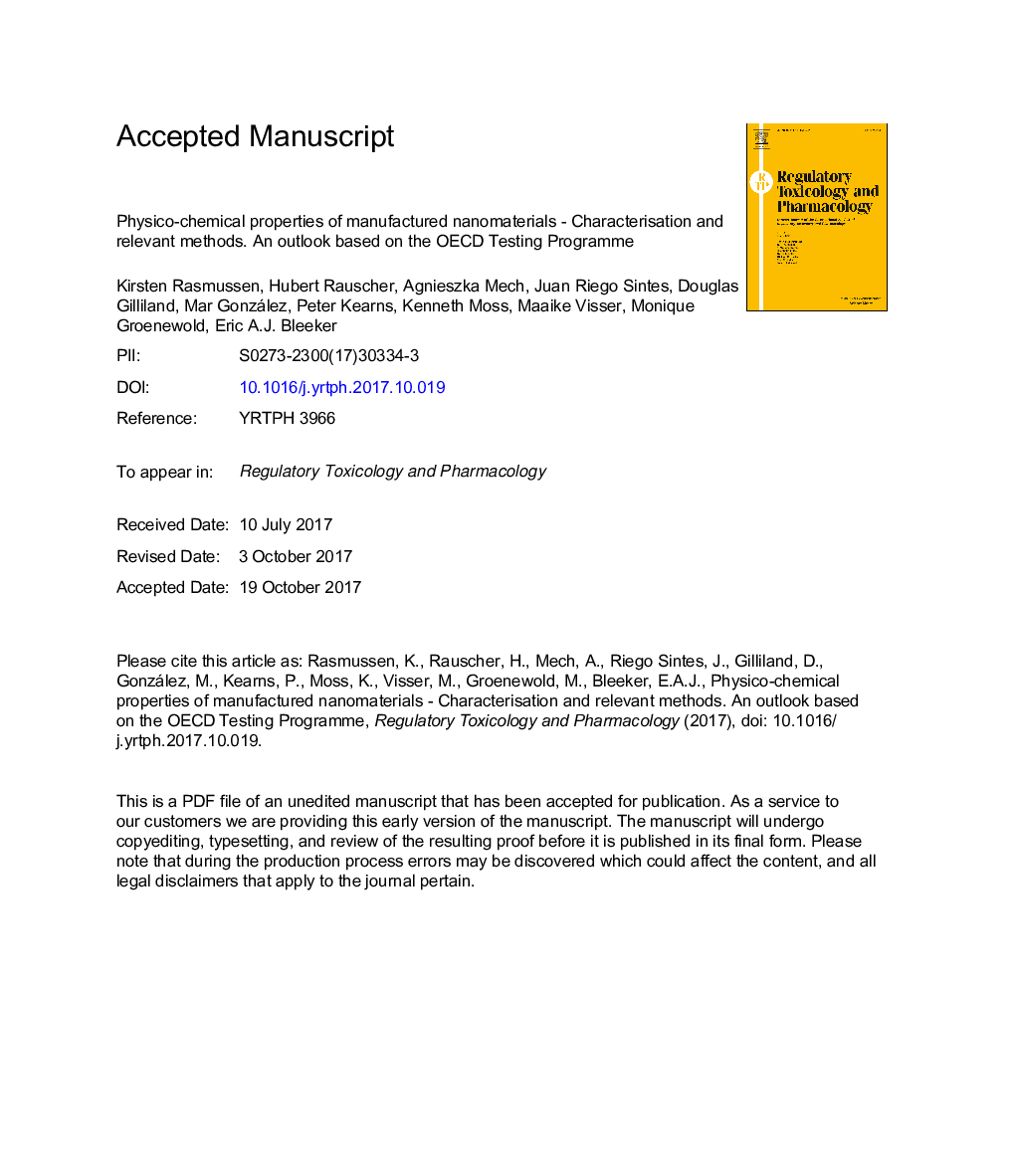| Article ID | Journal | Published Year | Pages | File Type |
|---|---|---|---|---|
| 8551803 | Regulatory Toxicology and Pharmacology | 2018 | 74 Pages |
Abstract
Identifying and characterising nanomaterials require additional information on physico-chemical properties and test methods, compared to chemicals in general. Furthermore, regulatory decisions for chemicals are usually based upon certain toxicological properties, and these effects may not be equivalent to those for nanomaterials. However, regulatory agencies lack an authoritative decision framework for nanomaterials that links the relevance of certain physico-chemical endpoints to toxicological effects. This paper investigates various physico-chemical endpoints and available test methods that could be used to produce such a decision framework for nanomaterials. It presents an overview of regulatory relevance and methods used for testing fifteen proposed physico-chemical properties of eleven nanomaterials in the OECD Working Party on Manufactured Nanomaterials' Testing Programme, complemented with methods from literature, and assesses the methods' adequacy and applications limits. Most endpoints are of regulatory relevance, though the specific parameters depend on the nanomaterial and type of assessment. Size (distribution) is the common characteristic of all nanomaterials and is decisive information for classifying a material as a nanomaterial. Shape is an important particle descriptor. The octanol-water partitioning coefficient is undefined for particulate nanomaterials. Methods, including sample preparation, need to be further standardised, and some new methods are needed. The current work of OECD's Test Guidelines Programme regarding physico-chemical properties is highlighted.
Keywords
CLSSMPSESRCNTWAXSTGPSWCNTPOMSDRMWCNTORPOECDICPFFFDTASSASTMCENAFMSAXSOECD test guidelinesWPMNJRCguidance documentUV-VisDLSnuclear magnetic resonanceAesDOSY NMRROSTof-SIMSDifferential Thermal AnalysisELSwide angle X-ray scatteringenergy dispersive X-ray spectrometryISOTemOESFourier-transform infrared spectroscopyField flow fractionationNMRElectron paramagnetic resonanceEPRCharacterisationmanufactured nanomaterialsPhysico-chemical propertiestwo dimensionalSingle particleElectron spin resonanceInternational Organisation for StandardisationOrganisation for Economic Co-operation and DevelopmentSpecific surface areathree dimensionalSIMSBETAuger electron spectroscopyFTIRTime-of-Flight Secondary Ion Mass Spectrometrysecondary ion mass spectrometryMass spectrometryX-ray photoelectron spectroscopyXRFXPSX-ray fluorescenceMALSSEMElectron microscopyScanning electron microscopyTransmission electron microscopyScanning tunnelling microscopyatomic force microscopyCarbon nanotubeSingle-walled carbon nanotubeMulti-walled carbon nanotubeNanomaterialX-ray diffractionXRDsmall angle X-ray ScatteringElectrophoretic light scatteringDynamic Light Scatteringmulti-angle light scatteringinductively coupled plasmaDifferential scanning calorimetryReactive oxygen species
Related Topics
Life Sciences
Environmental Science
Health, Toxicology and Mutagenesis
Authors
Kirsten Rasmussen, Hubert Rauscher, Agnieszka Mech, Juan Riego Sintes, Douglas Gilliland, Mar González, Peter Kearns, Kenneth Moss, Maaike Visser, Monique Groenewold, Eric A.J. Bleeker,
